At the bottom edges, the skirts of the Schwalm costumes were trimmed with narrow strips of fine cotton fabric and often decorated with additional borders. For the festive costumes there were many variations, and there was a clear scheme in the order of wearing the skirts with different borders. In Schwalm the borders were called “Schnur” (ribbons).
The first examples show solid colour cotton chintz fabrics which came from England or India. In Schwalm it was called “Tamis”, “Dames” or also “Damest”. (From about 1900 these were no longer available, so velvet was used.) These fabrics had a linen weave and were finished with an intense shine or glaze. The colours used for this purpose were red, green, blue (violet) and black, matching the respective costume set.
On top of these, one or two skirts with extravagantly coloured ribbons were worn. The “Damest” on these were not as deep, but they were additionally decorated with a multi-coloured silk ribbon.
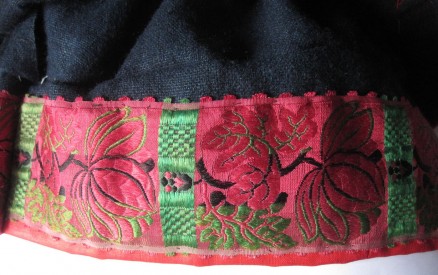
Skirt of the red costume, trimmed with red “Damest” and additionally decorated with a 8 cm wide silk ribbon.
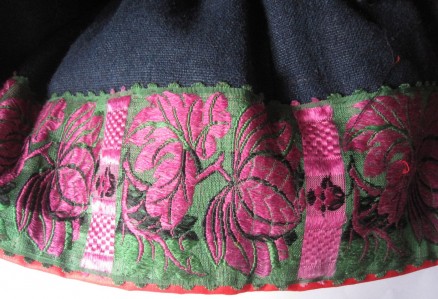
Skirt of the red costume, trimmed with red “Damest” and additionally decorated with a 8 cm wide silk ribbon.
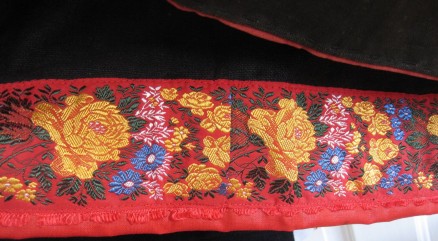
Skirt of the red costume, trimmed with red “Damest” and additionally decorated with a 4 cm wide silk ribbon.
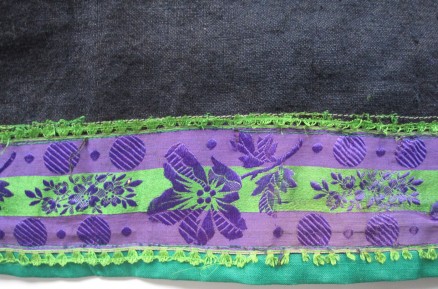
Skirt of the green costume, trimmed with green “Damest” and additionally decorated with a 6 wide silk ribbon.
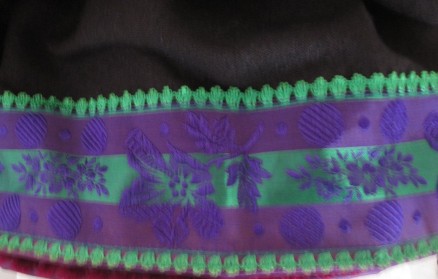
Skirt of the blue costume, trimmed with violet “Damest” and additionally decorated with a 6 cm wide silk ribbon.
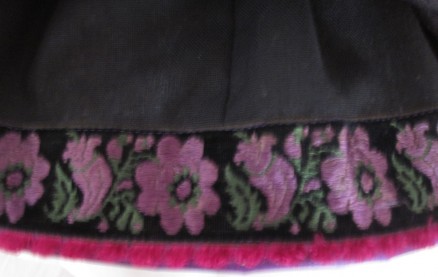
Skirt of the blue costume, trimmed with violet “Damest” and additionally decorated with a 6 cm wide silk ribbon.
On top of the skirts with the colourful woven ribbons, one or two skirts with curved bands were worn. A silk ribbon was laid in a zig-zag line and sewn onto a strip of “Damest” or onto a ribbon of silk.
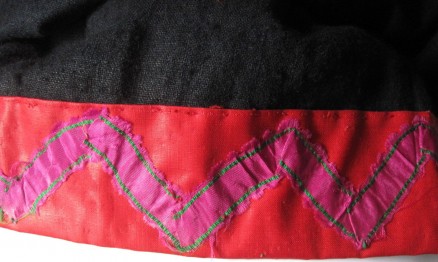
Skirt of the red costume, trimmed with red “Damest” 6 cm deep and additionally decorated with a silk ribbon in a single zig-zag line.
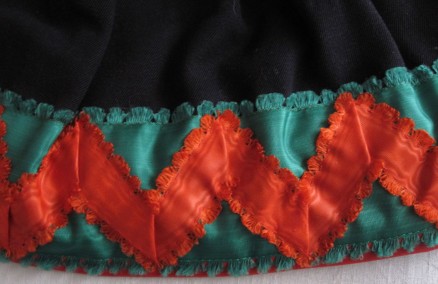
Skirt of the red costume, trimmed with red “Damest” and additionally decorated with a 6 cm wide green silk ribbon onto which a red ribbon is applied in a zig-zag line.
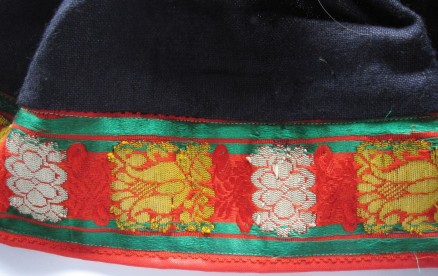
Skirt of the red costume, trimmed with red “Damest” and additionally decorated with a 6 cm wide extra fancy silk ribbon.
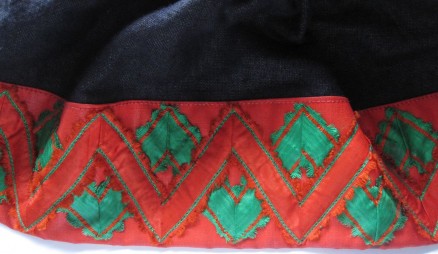
Skirt of the red costume, trimmed with red “Damest” 8 cm deep and additionally decorated with two silk ribbons creating a double zig-zag line.
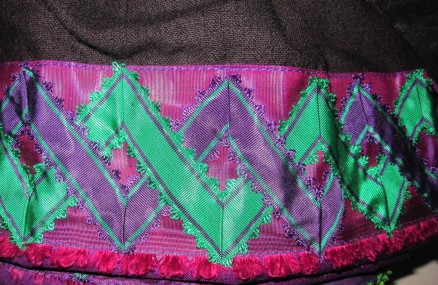
Skirt of the blue costume, trimmed with violet “Damest” and additionally decorated with an 8 cm wide silk damask ribbon onto which two silk ribbons were sewn creating a double zig-zag line.
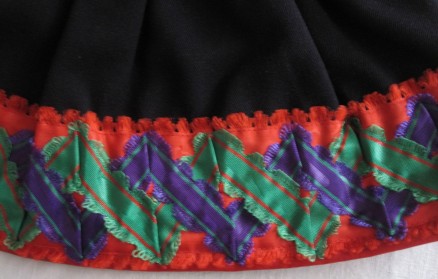
Skirt of the red costume, trimmed with red “Damest” and additionally decorated with an 8 cm wide red silk damask ribbon onto which two silk ribbons were sewn creating a double zig-zag line.
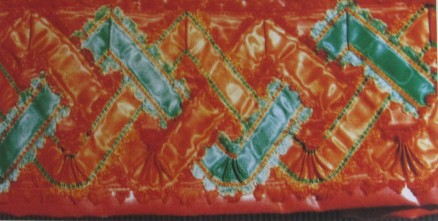
Skirt of the red costume, trimmed with red “Damest” and additionally decorated with an 8 cm wide silk ribbon onto which three silk ribbons were sewn creating a triple zig-zag line.
The last skirt before the top skirt was the most magnificent one. It had both a ribbon with a double or a triple zig-zag line and a multi-coloured silk ribbon. Or sometimes two ribbons, one with a triple and one with a double zig-zag line.
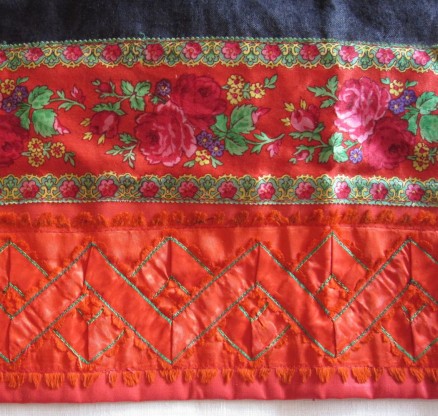
Skirt of the red costume, trimmed with red “Damest” and decorated with two silk ribbons creating a double zig-zag line and a multi-coloured silk ribbon.
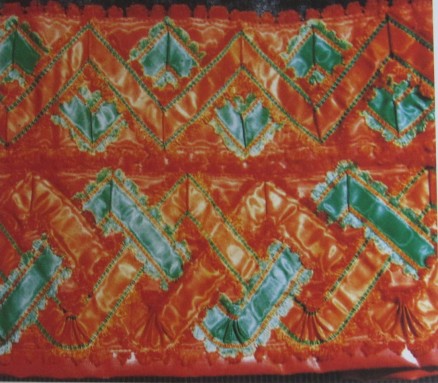
Skirt of the red costume, trimmed with red “Damest” and additionally decorated with an 8 cm wide silk ribbon onto which three silk ribbons were sewn creating a triple zig-zag line and additionally decorated with a 6 cm wide silk ribbon onto which two silk ribbons were sewn creating a double zig-zag line.
All these colours and all this splendour inspired many artists to feature the costumes in their paintings. Shown here is a painting by Carl Bantzer (1857-1941); it is called “Schwälmer Tanz” (Schwalm dance) and is dated 1898.
It is on display, also virtual, in the Philipps University in Marburg,Germany (Museum für Kunst und Kulturgeschichte Marburg, Biegenstraße 11, D-35032 Marburg)
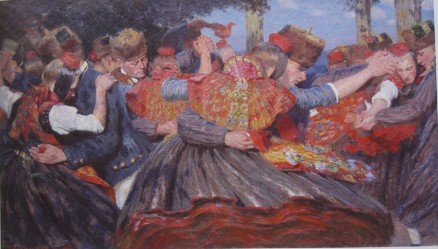
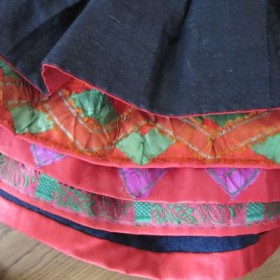
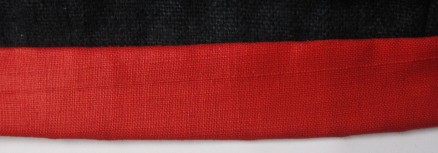


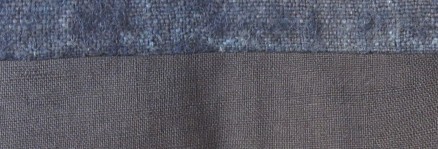
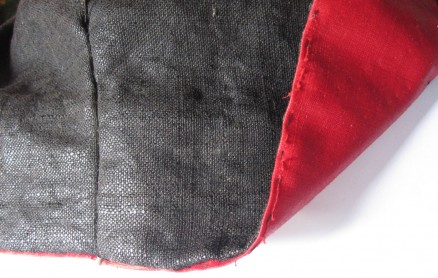
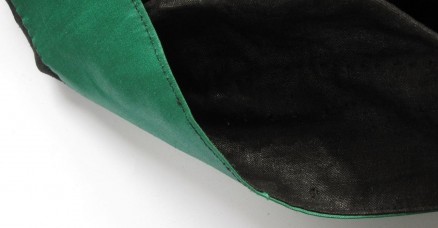
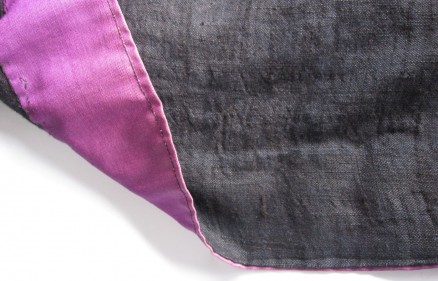


Liebe Luzine,
vielen Dank für diesen interessanten Beitrag!
Herzlichen Grüßen, Jessica Grimm
Liebe Jessica,
vom Schwälmer Kulturgut ist für mich die Weißstickerei natürlich am interessantesten, weil sie so abwechslungsreich und außergewöhnlich ist. Doch die Schwalm hat viel mehr zu bieten. So versuche ich, hin und wieder auch darüber zu berichten, so dass sich für die Leser am Ende ein Gesamtbild ergibt.
Vielen Dank, dass Sie meine Beiträge verfolgen und auch kommentieren.
Beste Grüsse
Luzine